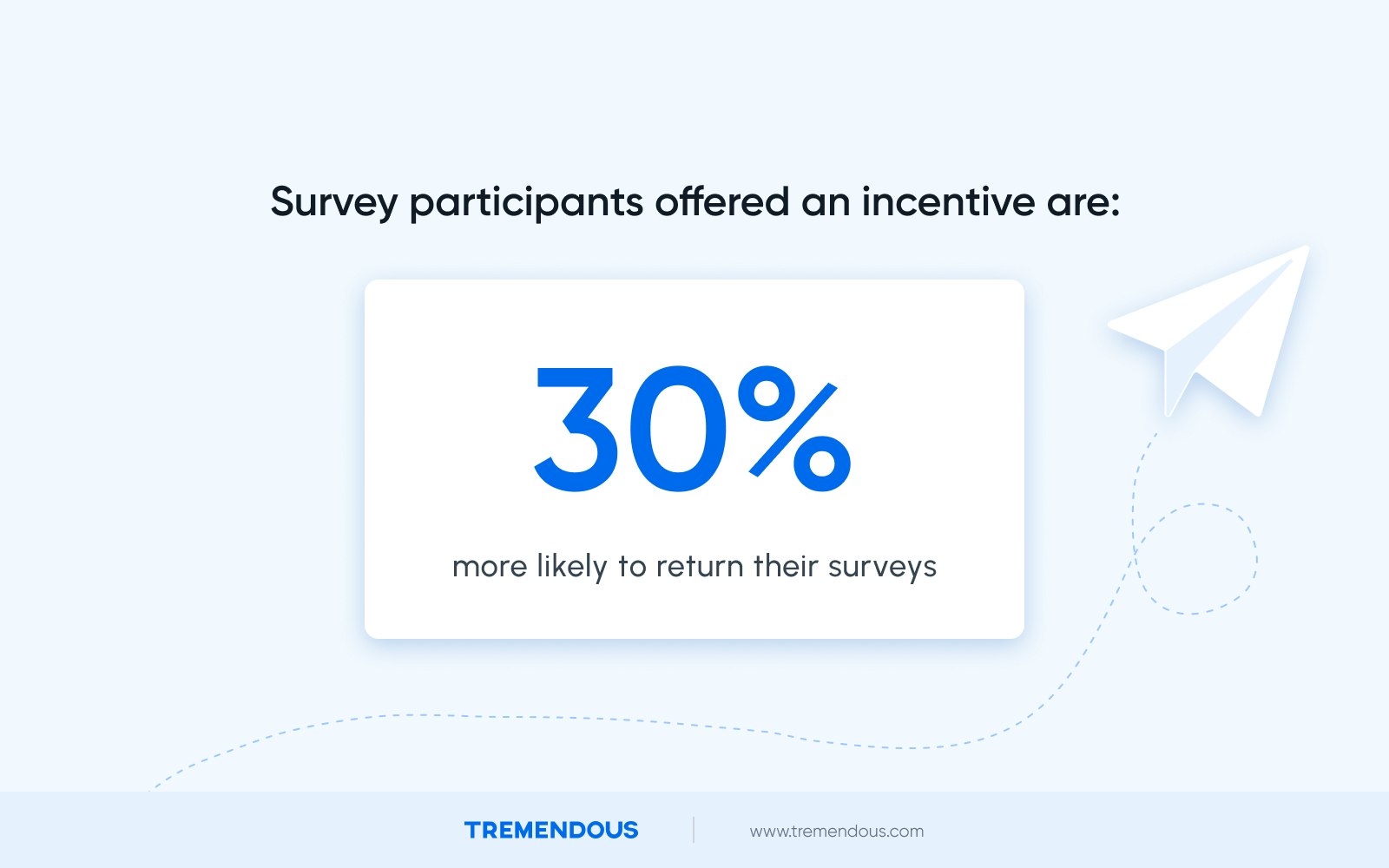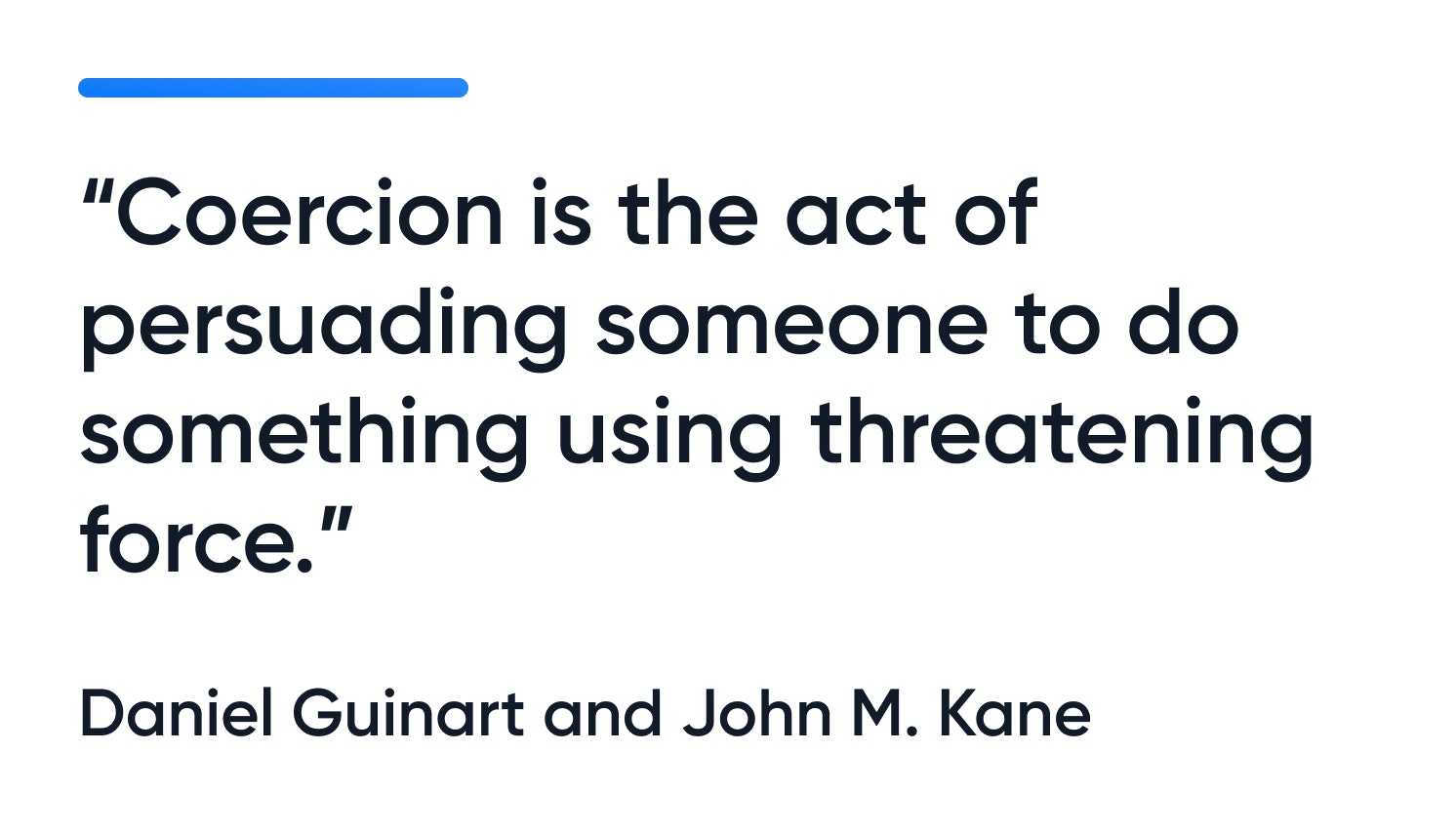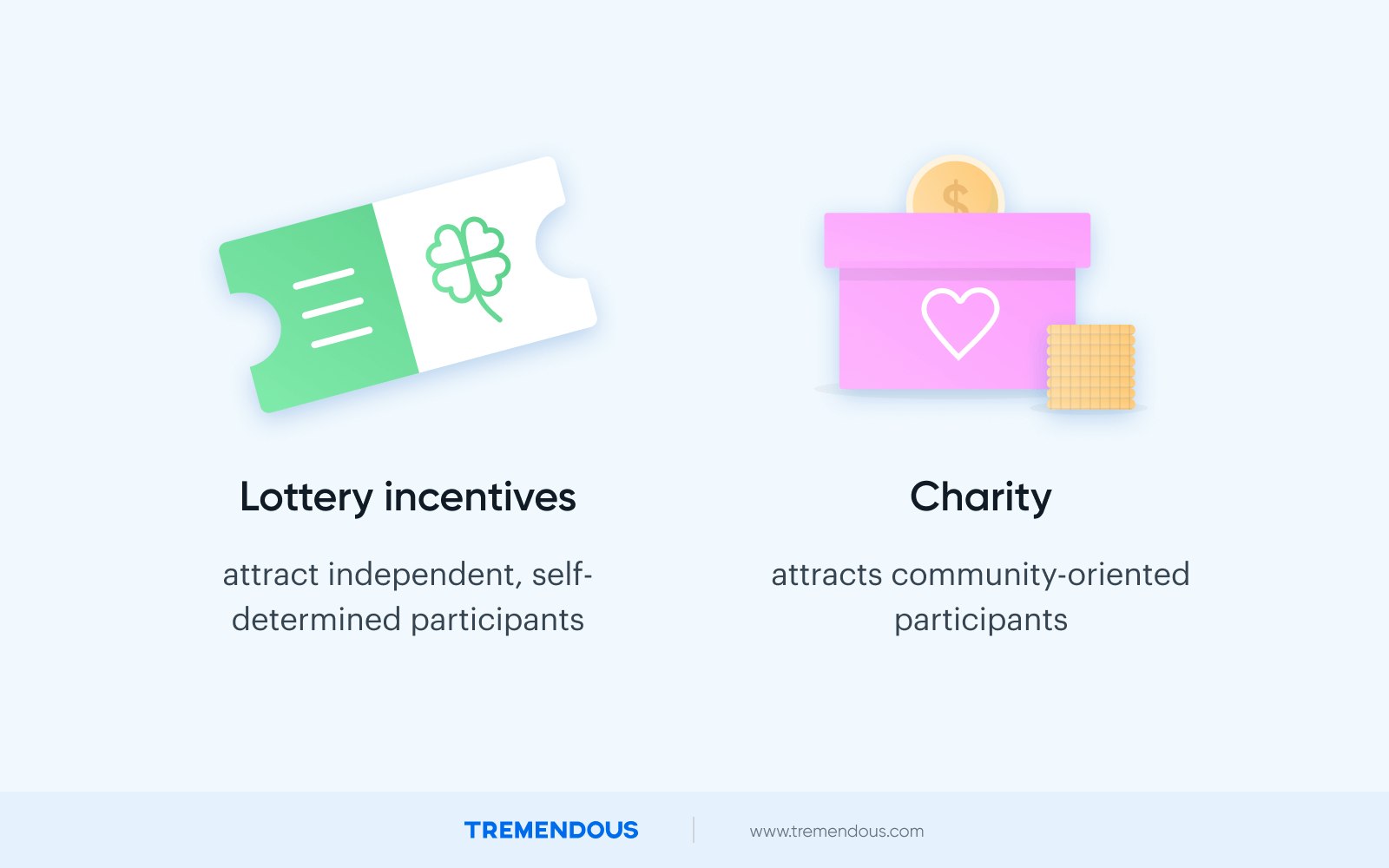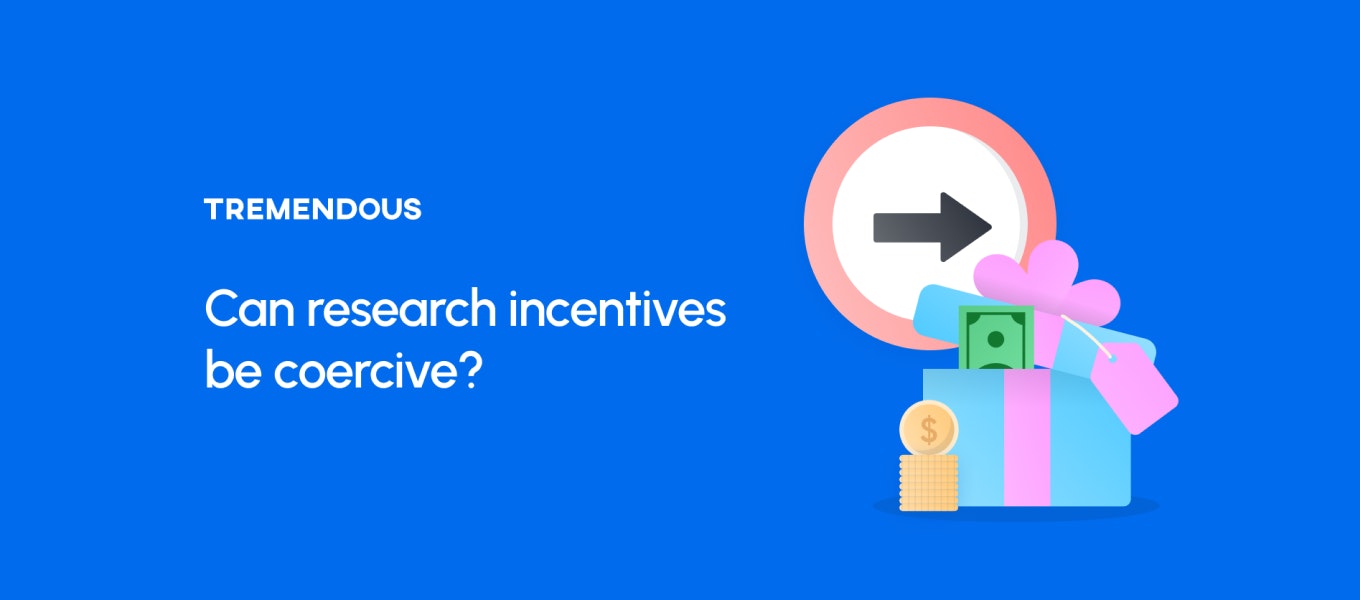There’s a big difference between coercion and incentivization, which means you don’t have to worry about your research incentives being unintentionally coercive.
And research incentives are a really valuable tool. They increase study participation, yield higher-quality responses, and retain more committed participants.
According to studies by BMC Medical Research, survey participants who were offered financial compensation were at least 30% more likely to return their surveys.
Incentives can also improve the quality of responses. It turns out, paying people for their time is a good way to communicate that their feedback is valuable.
Incentives encourage participants to take your study seriously and provide more helpful insights you can use to make important decisions.
But you do have to consider how incentives might influence participants– and how you can reduce undue influence while still getting the benefits of incentives.

No, incentives are not coercive. But they can exert undue influence
When you’re designing a study, you have to make sure you’re gathering data ethically and that it’s useful for drawing insights. If your participants can’t consent or give honest answers, that’s a big problem.
Let’s consider the differences between coercion, incentivization, influence, and undue influence.
The Belmont Report was developed to ensure consistent ethical standards for research in 1974. This report established the requirements for “valid consent” for participation: in order to consent, participants cannot be coerced or unduly influenced.
Coercion, in this case, is defined as the application of intentional and “overt” threats to gain compliance.
According to Daniel Guinart and John M. Kane, this basically means coercion is the act of persuading someone to do something using threatening force.

Incentivization, on the other hand, involves offering something attractive to persuade participants.
By definition, then, research incentives are not coercive. They are not a show of force to demand participation in a study. Instead, they motivate participation by offering encouragement and compensation for time spent.
But incentives aren't totally neutral. They can exert undue influence, especially if you're paying people way too much money.
The ACRP uses the definitions laid out in the Belmont Report to draw a distinction between influence and undue influence.
Exerting influence means to “impact, determine, guide, shape, alter, change, or transform” the result in some way. Exerting influence is not unethical. In fact, it’s nearly impossible not to exert any influence.
Exerting undue influence means that your influence is “excessive, unwarranted, inappropriate, or improper.” This is when influence becomes a problem– especially if the subject is vulnerable in some way.
Several organizations, including the HHS, the Office for Human Research Protections, and the FDA have acknowledged that research incentives, particularly monetary incentives, are a common and acceptable practice as long as proper precautions are taken to avoid any undue influence.
Do research incentives create bias?
The next big question is, do research incentives create bias? Yeah, but probably not in the way you'd expect.
Incentives can create bias in your study, but not because participants feel pressured to answer a certain way. Instead, they create bias by influencing who actually participates in your study.
For example, the type of incentive you offer can influence who volunteers to participate. In a study conducted by two researchers at the University of Washington, researchers found that different kinds of incentives attracted different participants.
Lottery incentives attracted more independent, self-determined participants. Their responses often include a lot of generative, creative feedback that can be really useful for brainstorming new ideas.
Incentives that involved gifts to charity tended to attract more community-oriented people. This changes the way they consider questions and how they formulate their responses; they have a lot of consideration for other people.

The different values of potential participants could affect the results and unintentionally create selection bias.
However, according to a paper published by the National Bureau of Economic Research, you can also use incentives to reduce selection bias.
This is why considering the design of your study and the kinds of incentives you offer can go a long way to improving the quantity and quality of the responses.
You may have noticed a trend in the reviews left for businesses and organizations that have voluntarily review systems built in: most of the reviews are one-star or five-star.
These are people who have self-selected themselves to leave feedback because they already have strong opinions; they either loved it or hated it.
But this leaves out a large part of the population who don’t have polarized opinions. That’s valuable data you could be missing out on.
The study found that offering incentives helped minimize bias rather than create it. Incentives encouraged people without extreme views to participate, and also motivated participants to consider their responses more carefully.
How to reduce undue influence
Understanding that research incentives aren’t coercive and don’t create bias in your studies is useful.
But when you conduct studies, you want to ensure that you aren't exerting undue influence on your research participants when you offer incentives.
How do you do that? The short answer: pay people appropriately.
There are also a few other considerations you can take into account as you design appropriate incentives for your study:
Decide what payment type and amount makes sense for the demographic you’re targeting.
Adjust your incentives based on the income of your demographic populations.
Check exchange rates if you are offering incentives to people in different countries to ensure you’re not over or underpaying them.
If you’re asking high-paid individuals like executives to participate in your study, a charitable donation can be a more attractive offer than a cash incentive.

Conclusion
Incentives have been proven to be a really valuable tool for encouraging participants to provide thoughtful feedback for your study.
But as with any tool, you have to know how to use them. Research incentives aren’t inherently coercive and they don’t necessarily create bias in your study.
However, they can exert undue influence. Understanding and reducing undue influence means that you’ll be more effective at designing studies and offering incentives. And that means better results.
